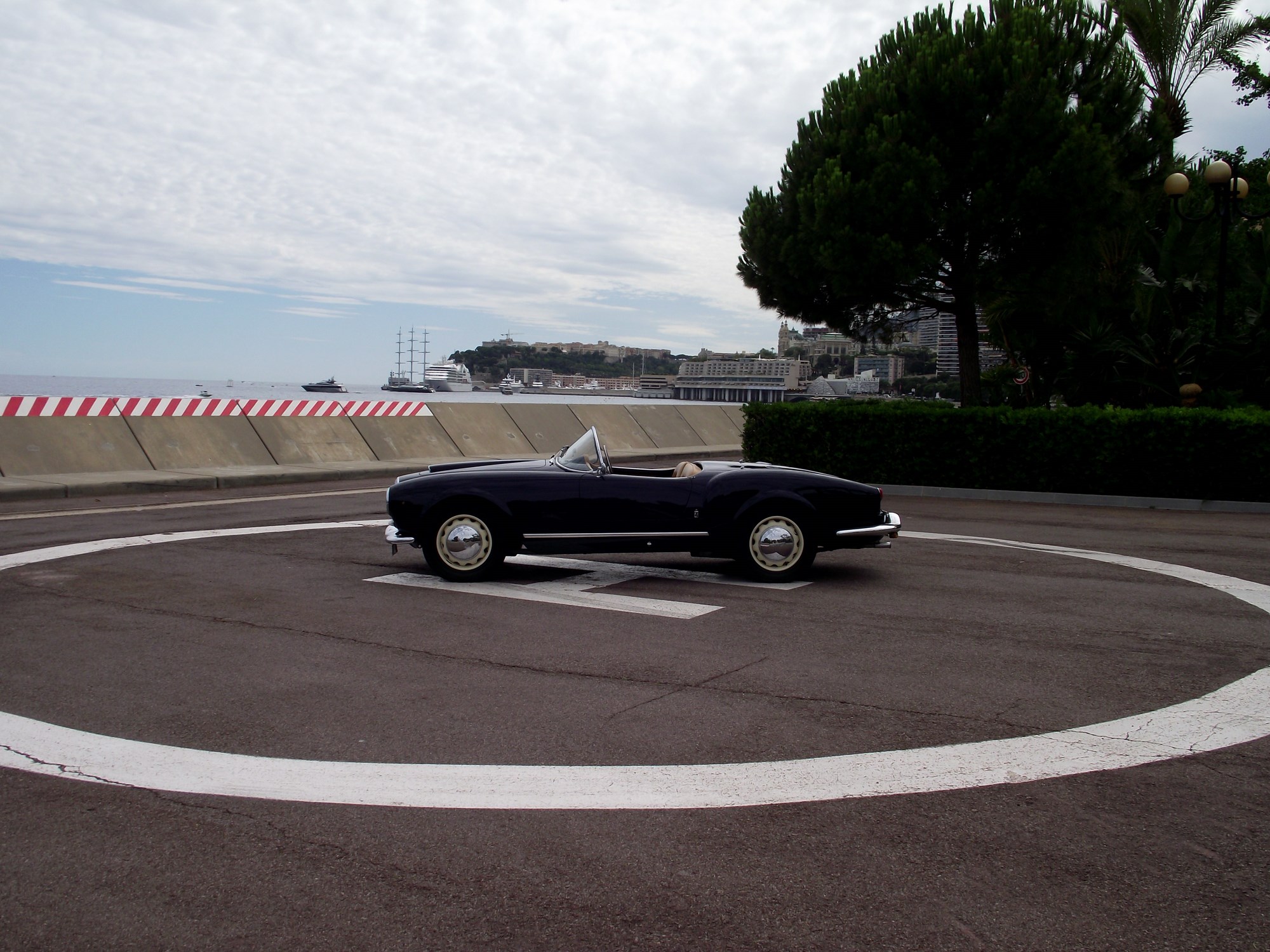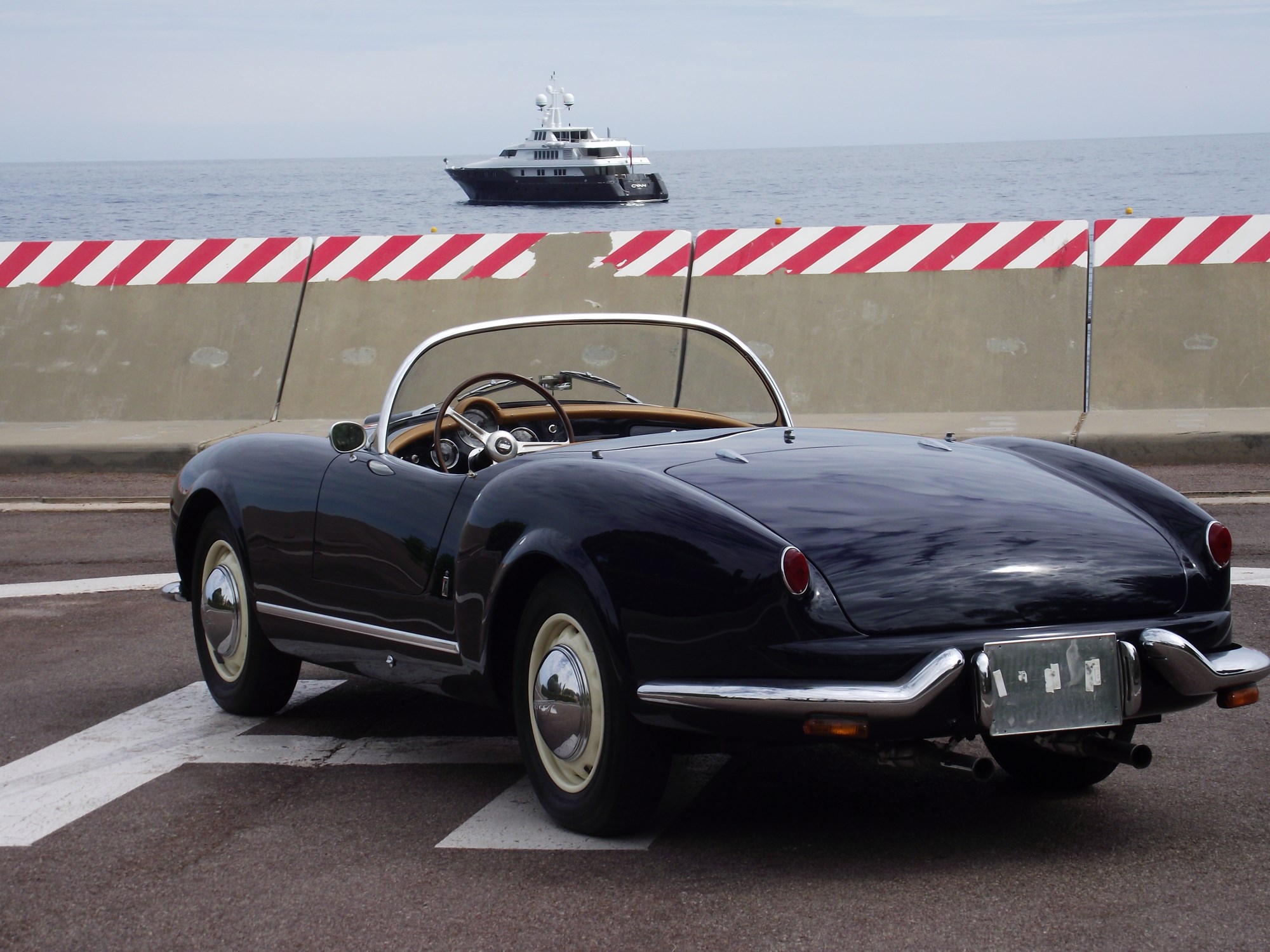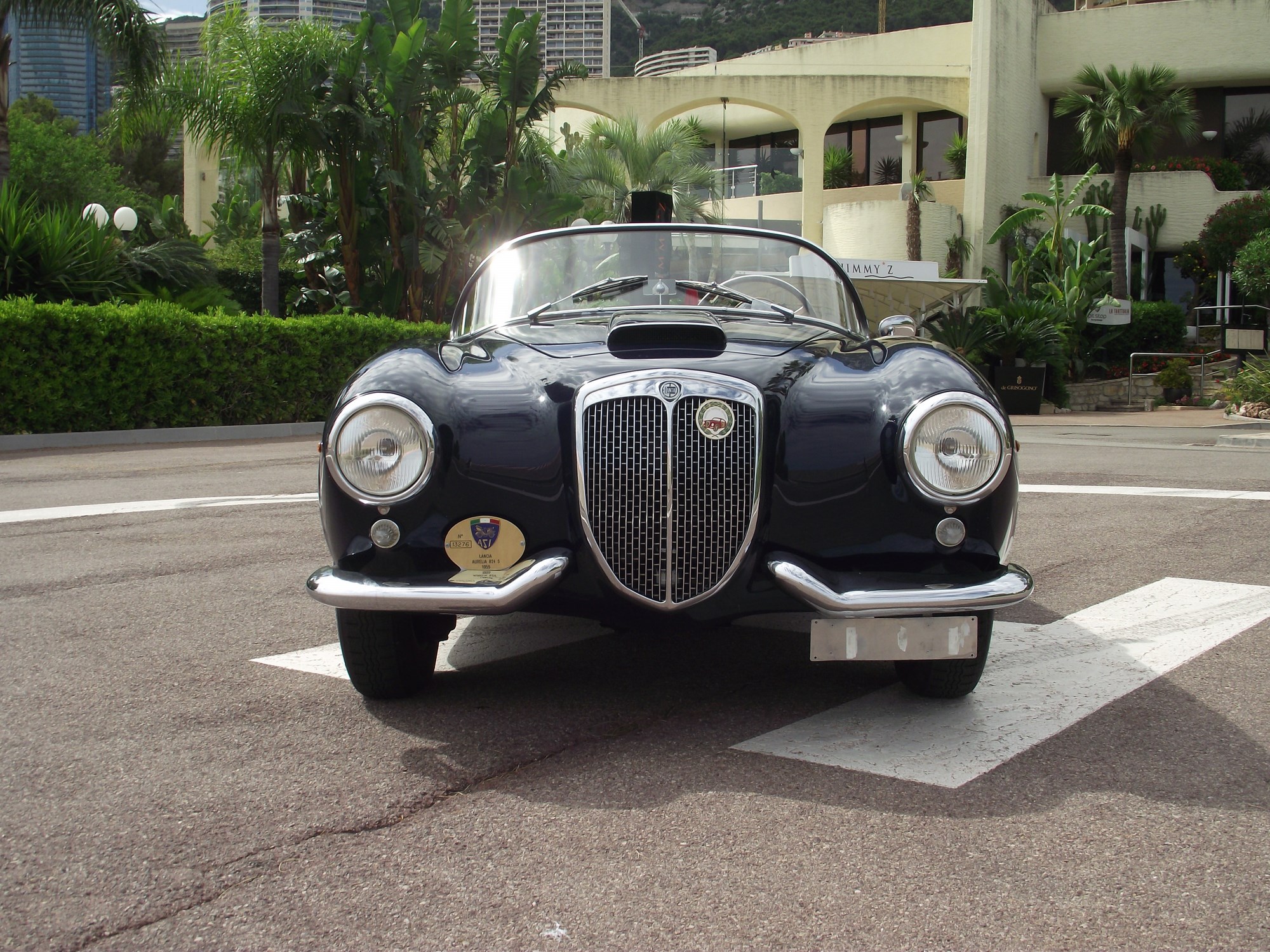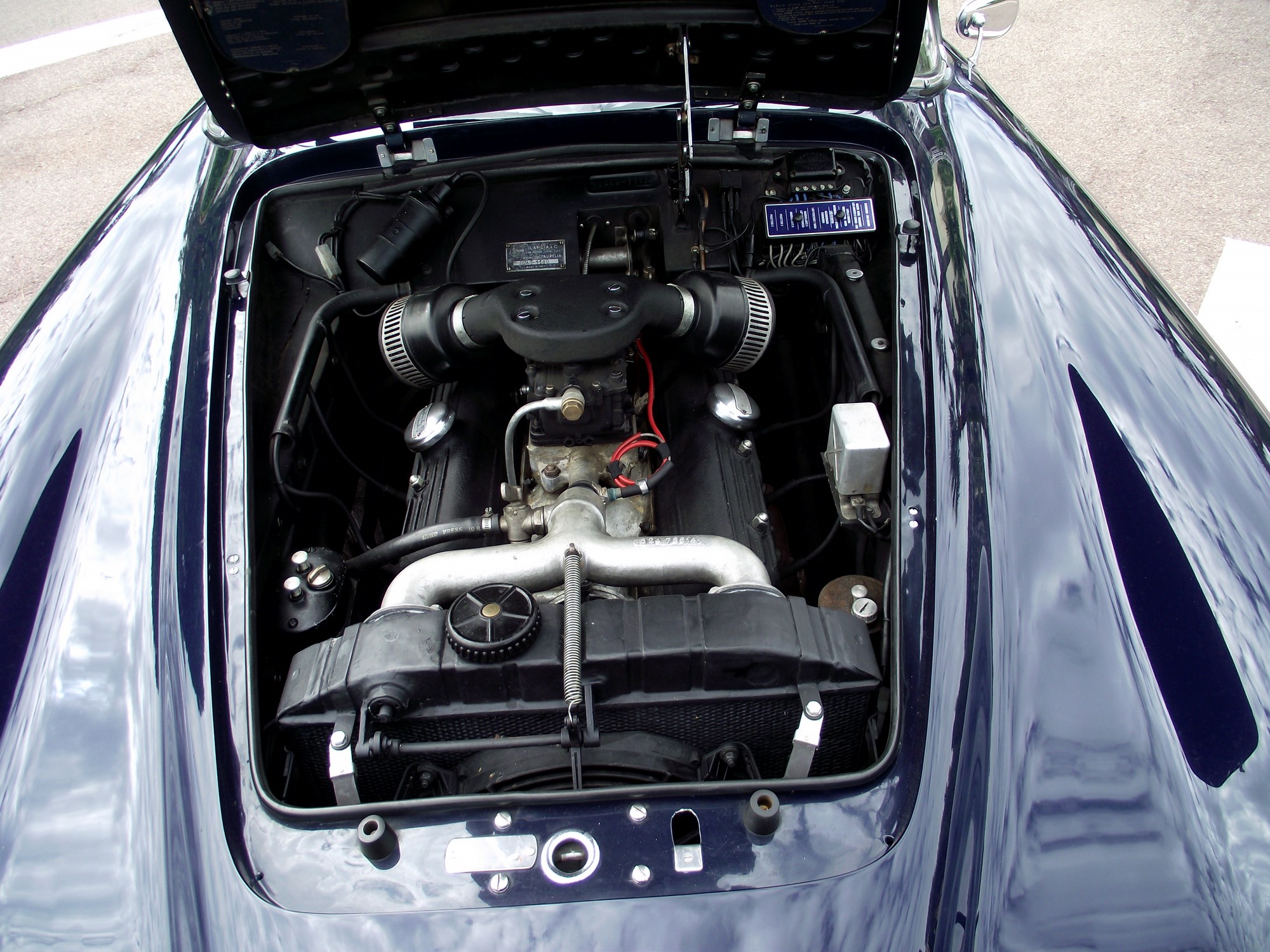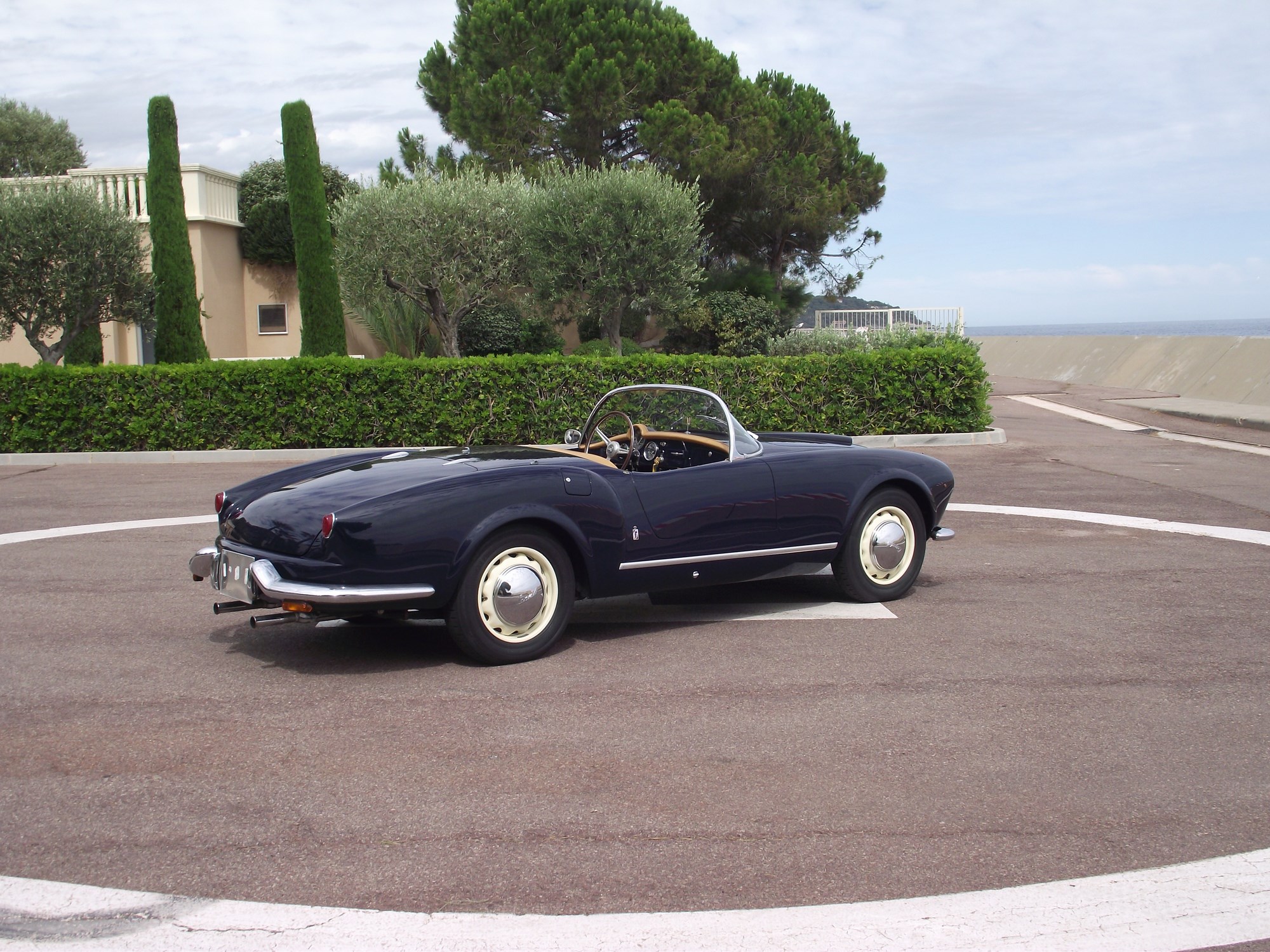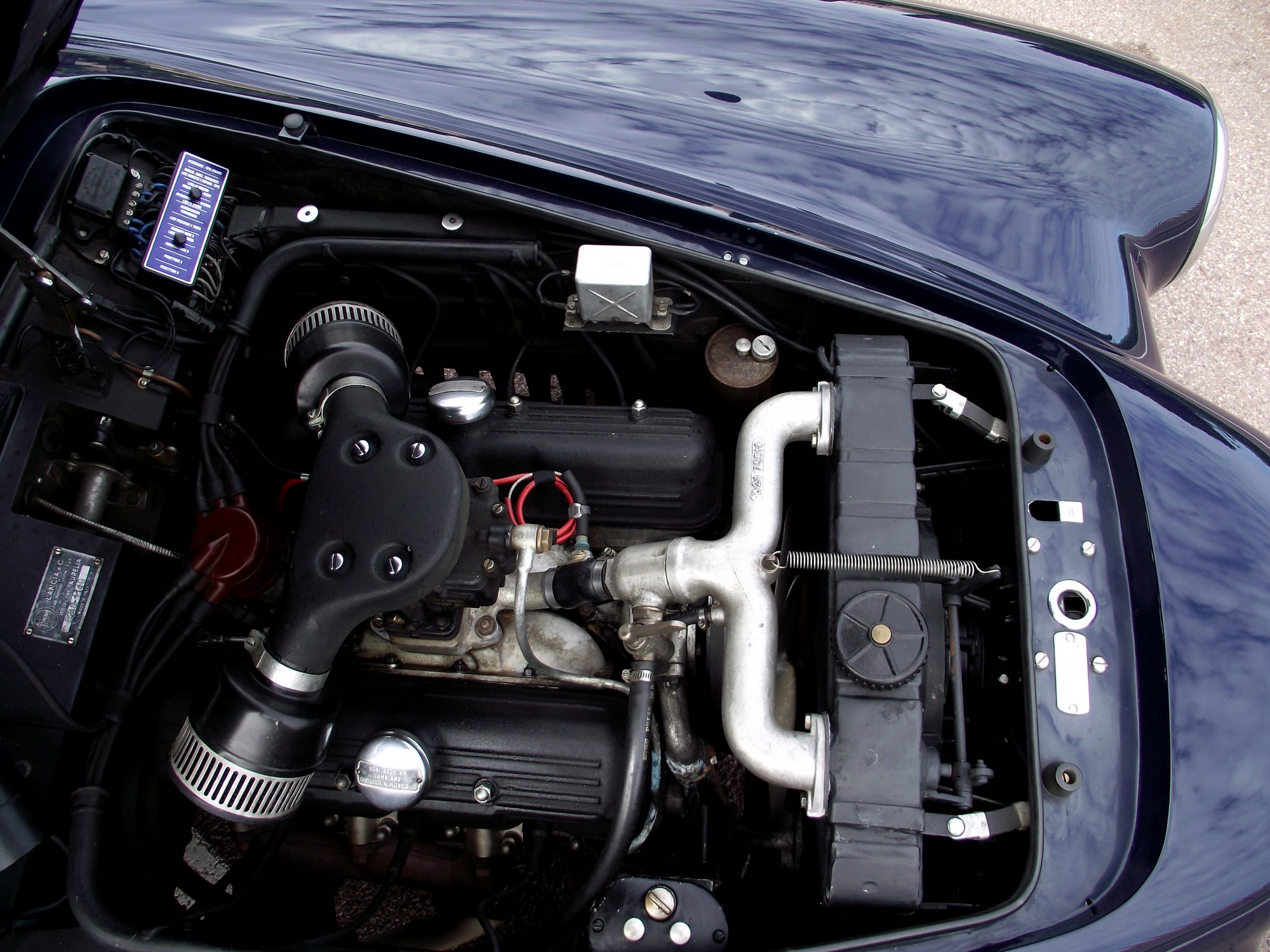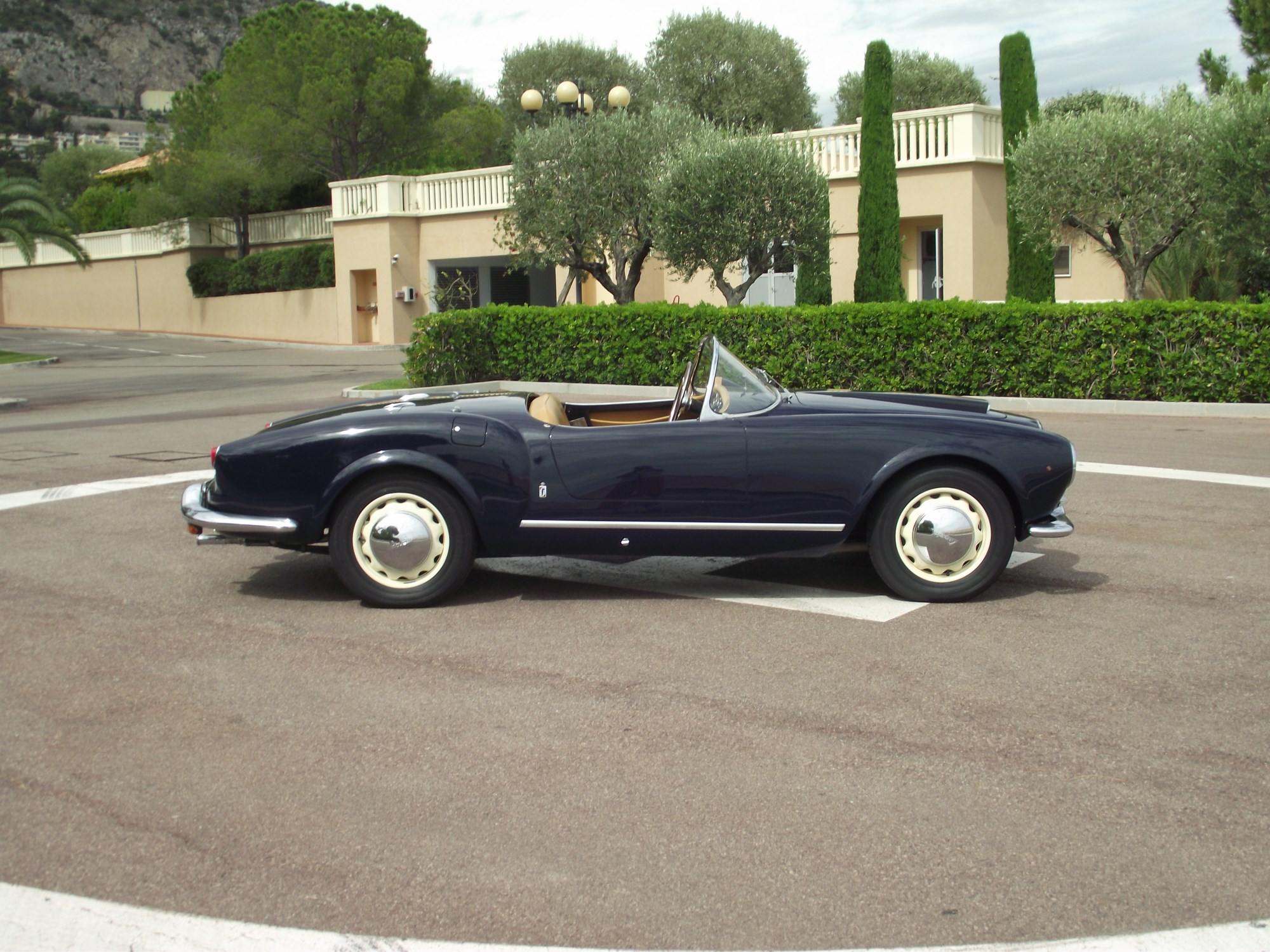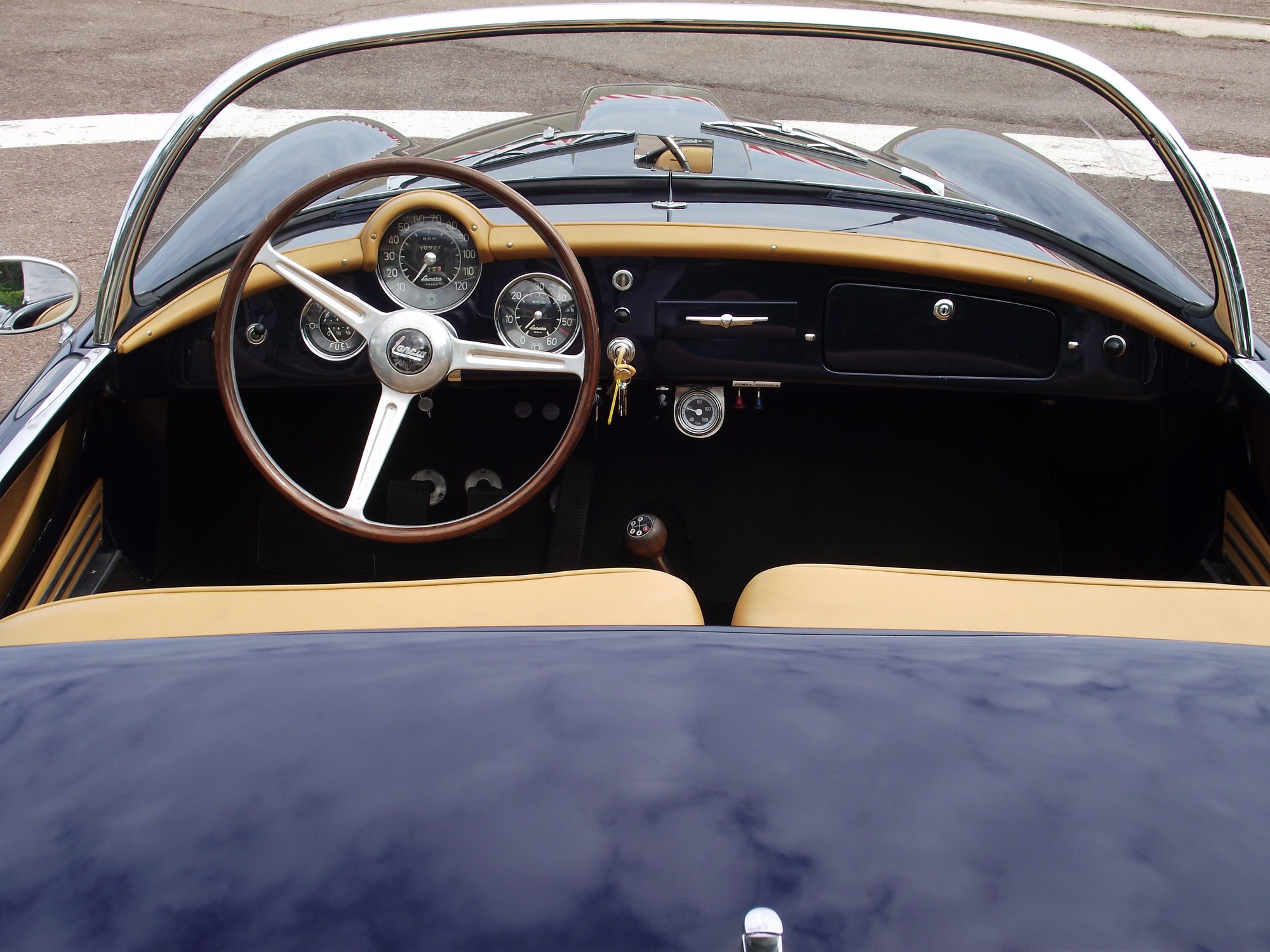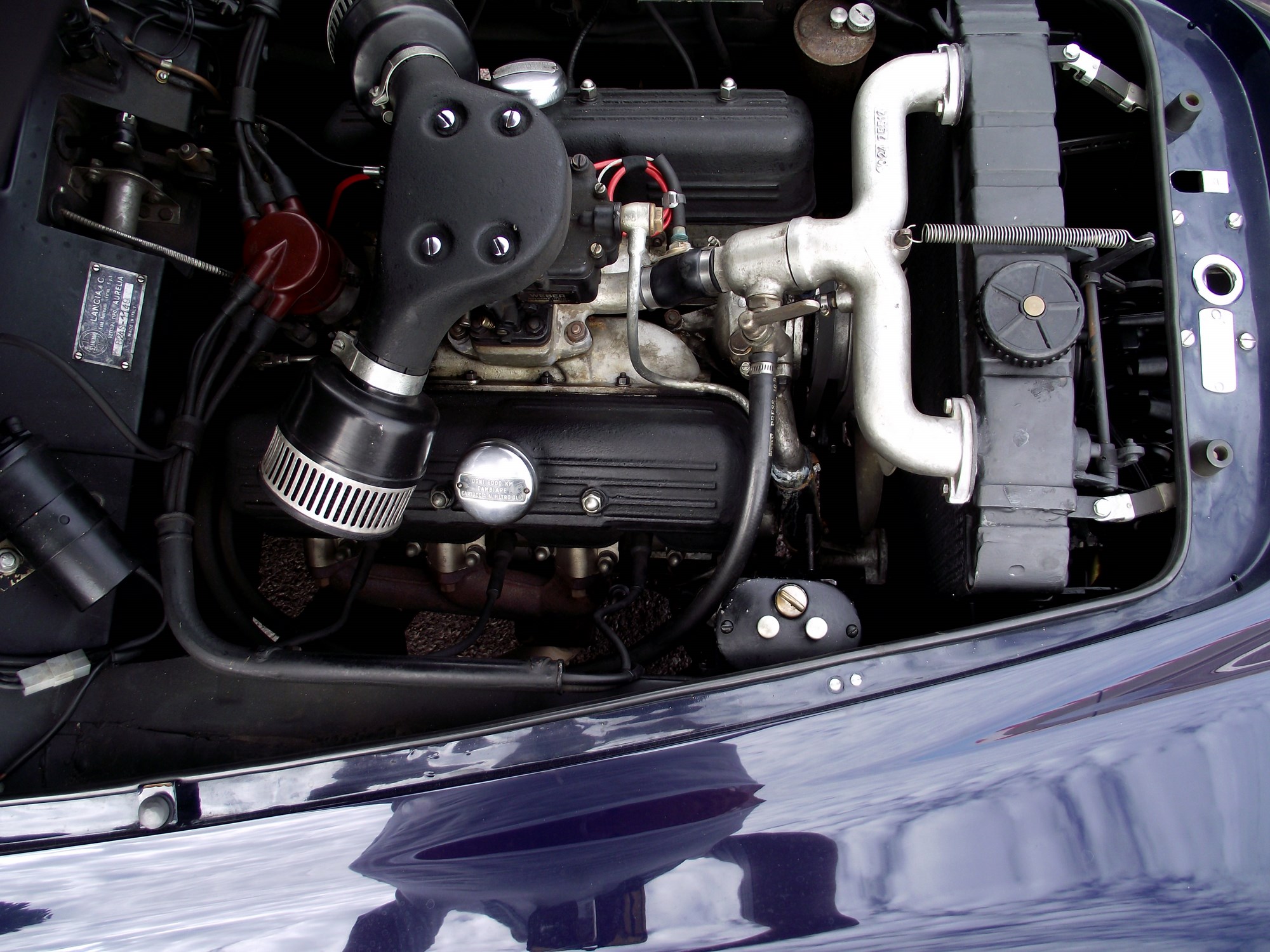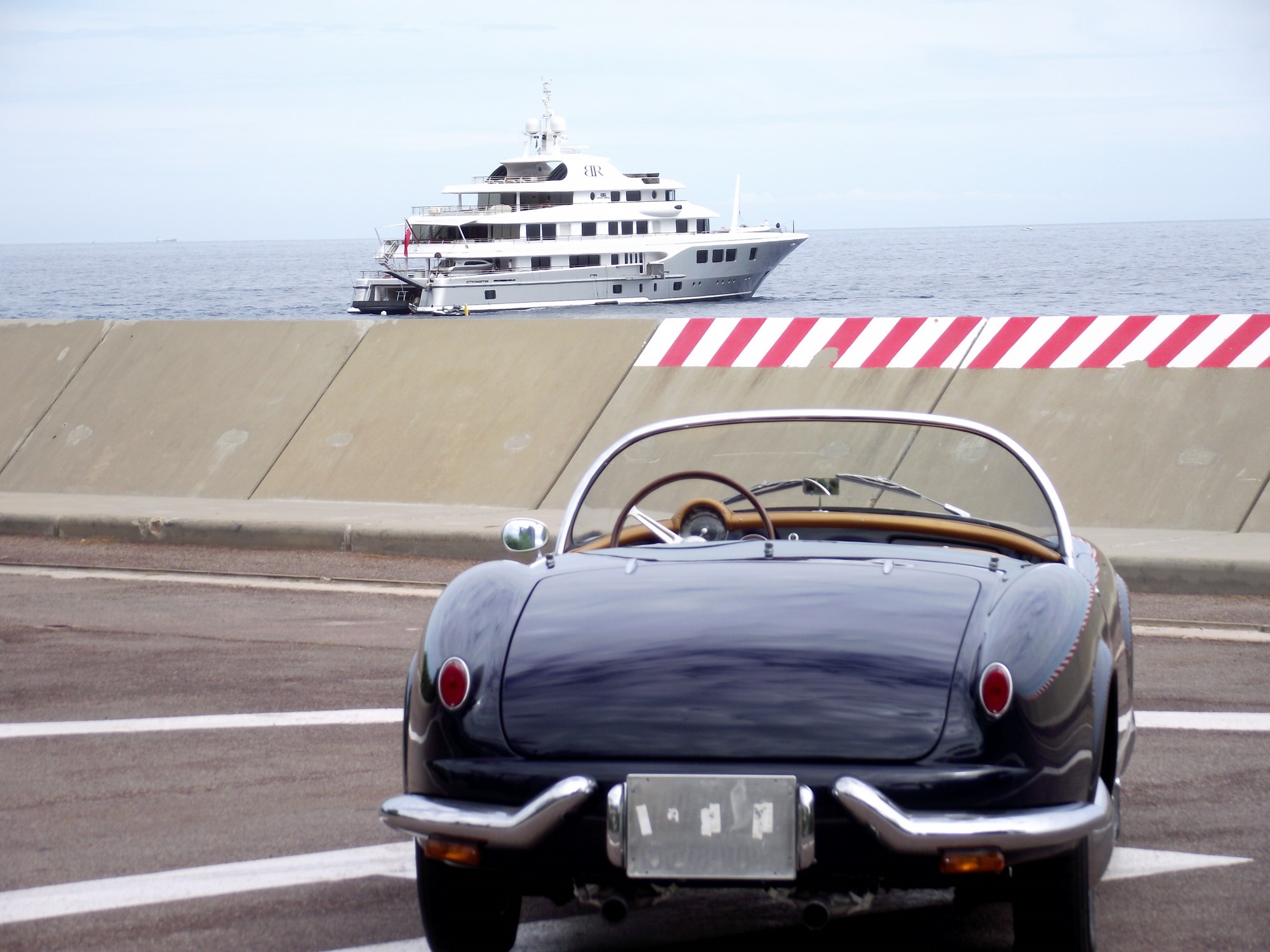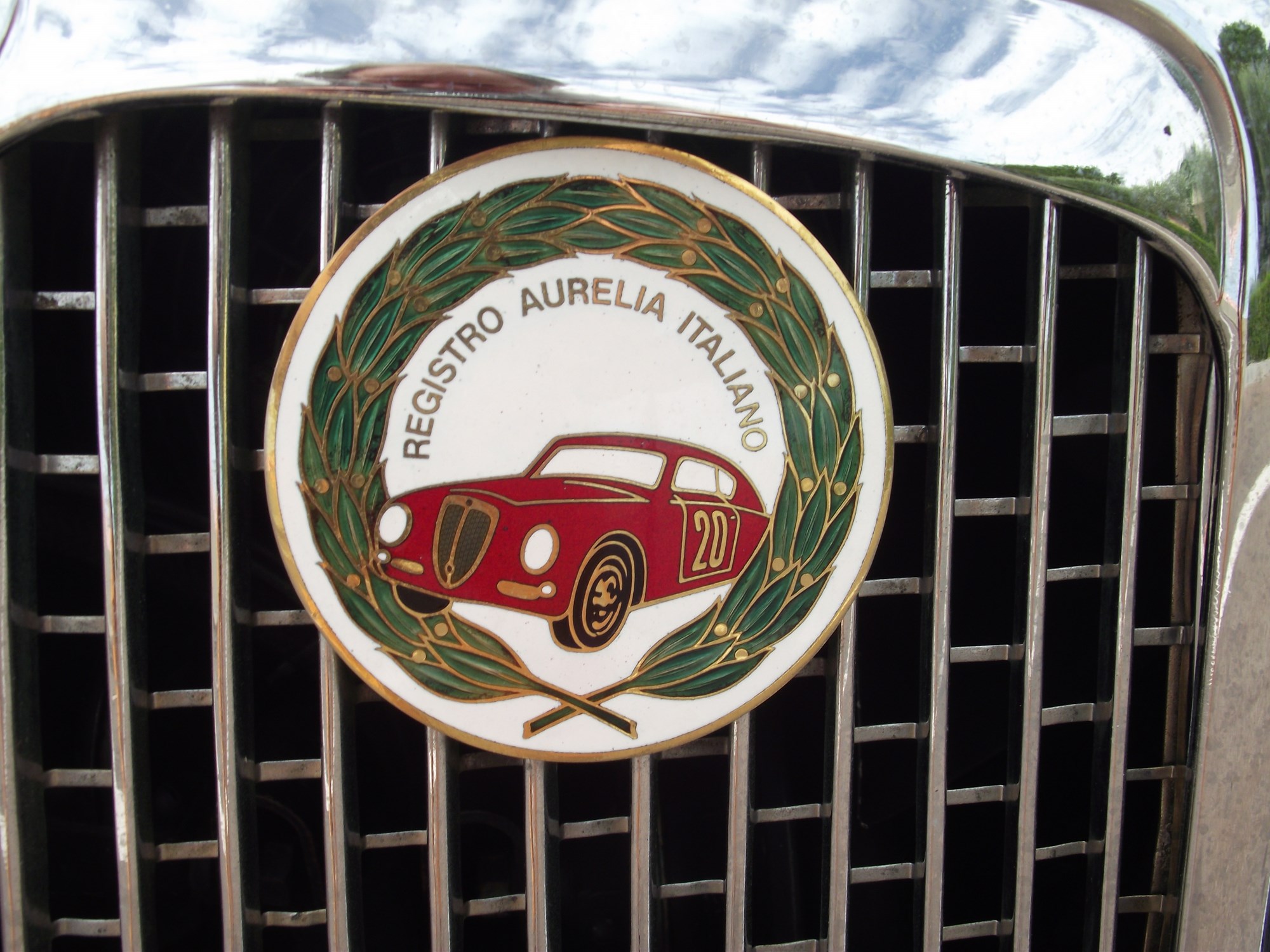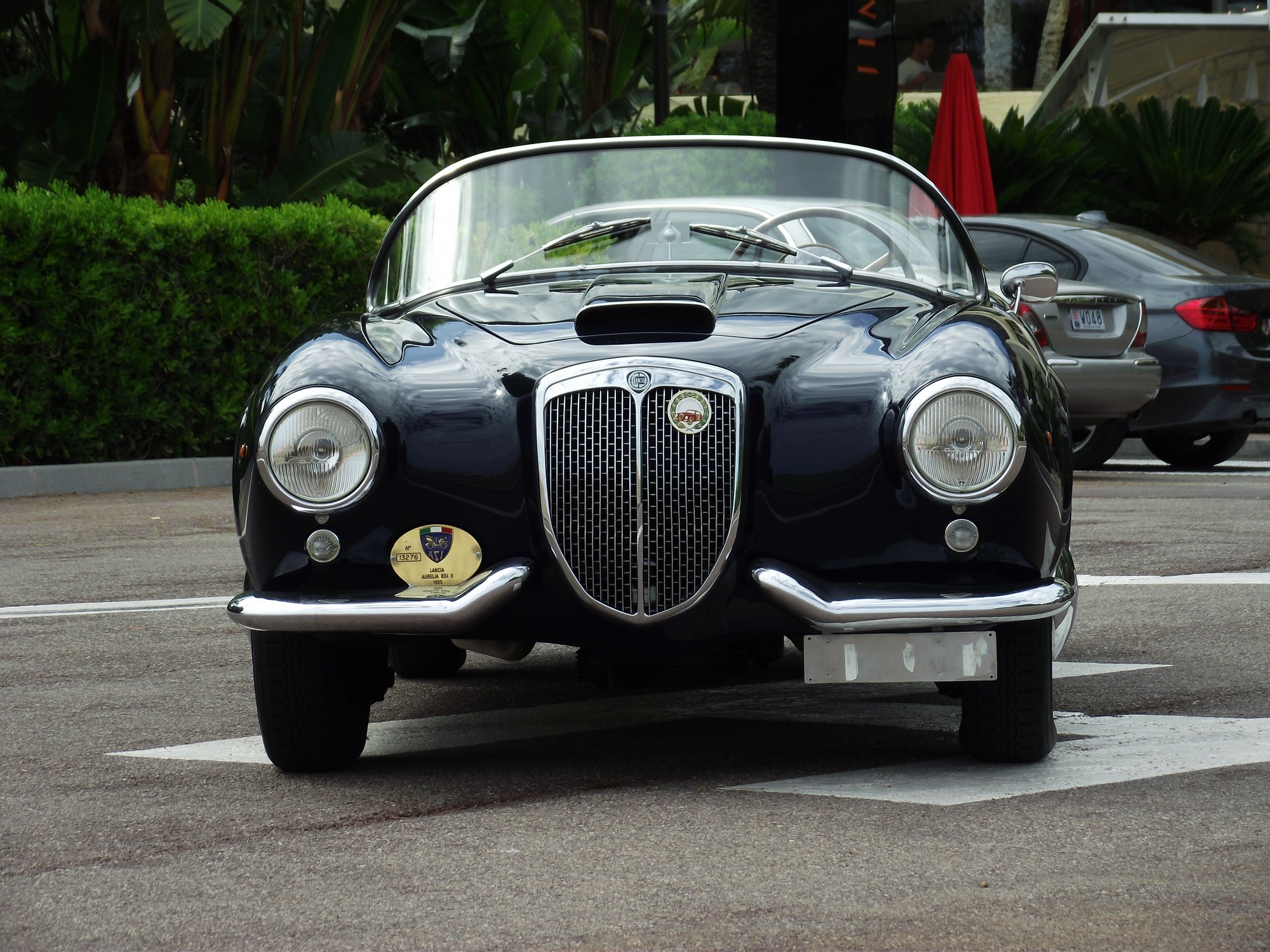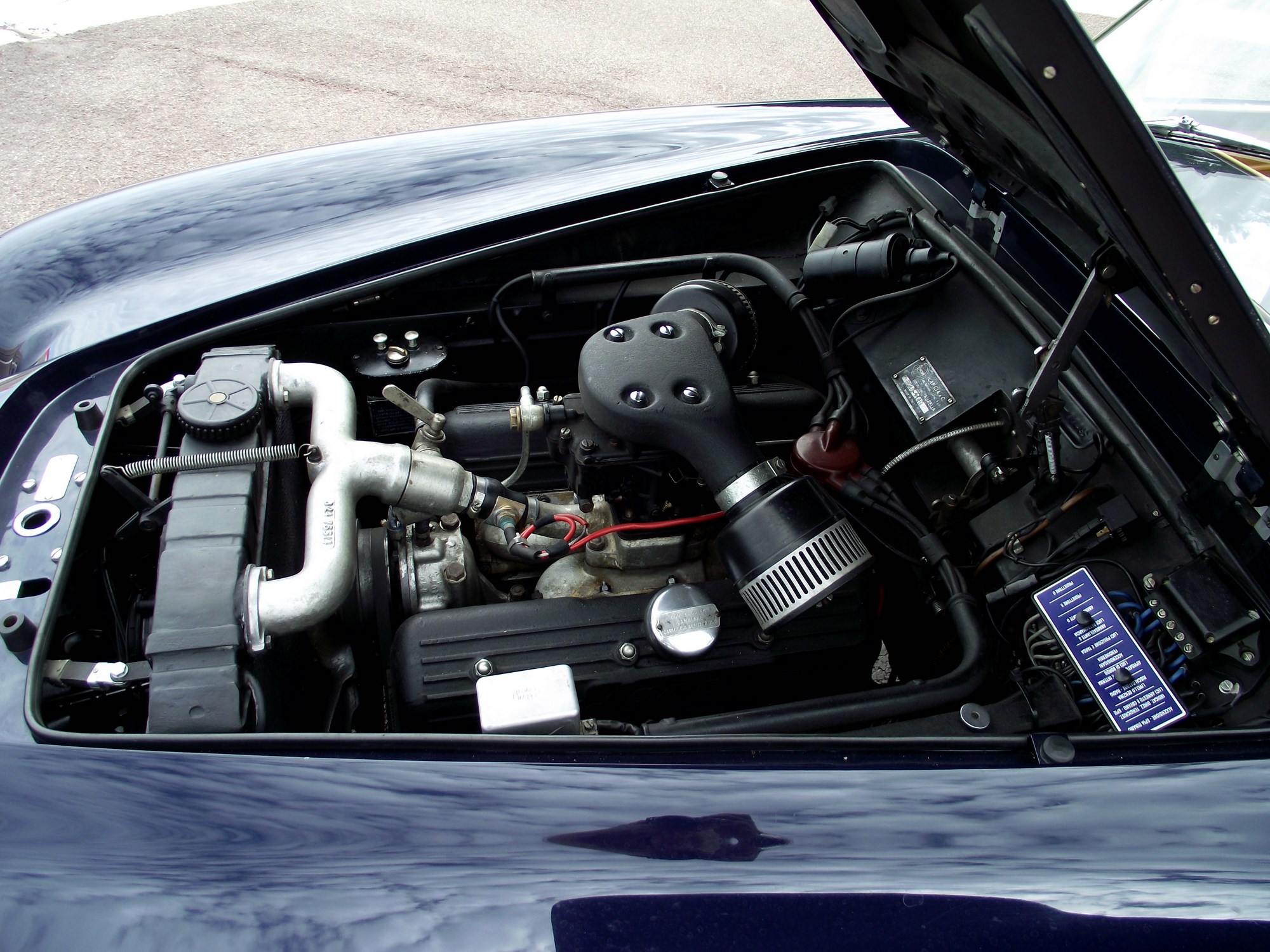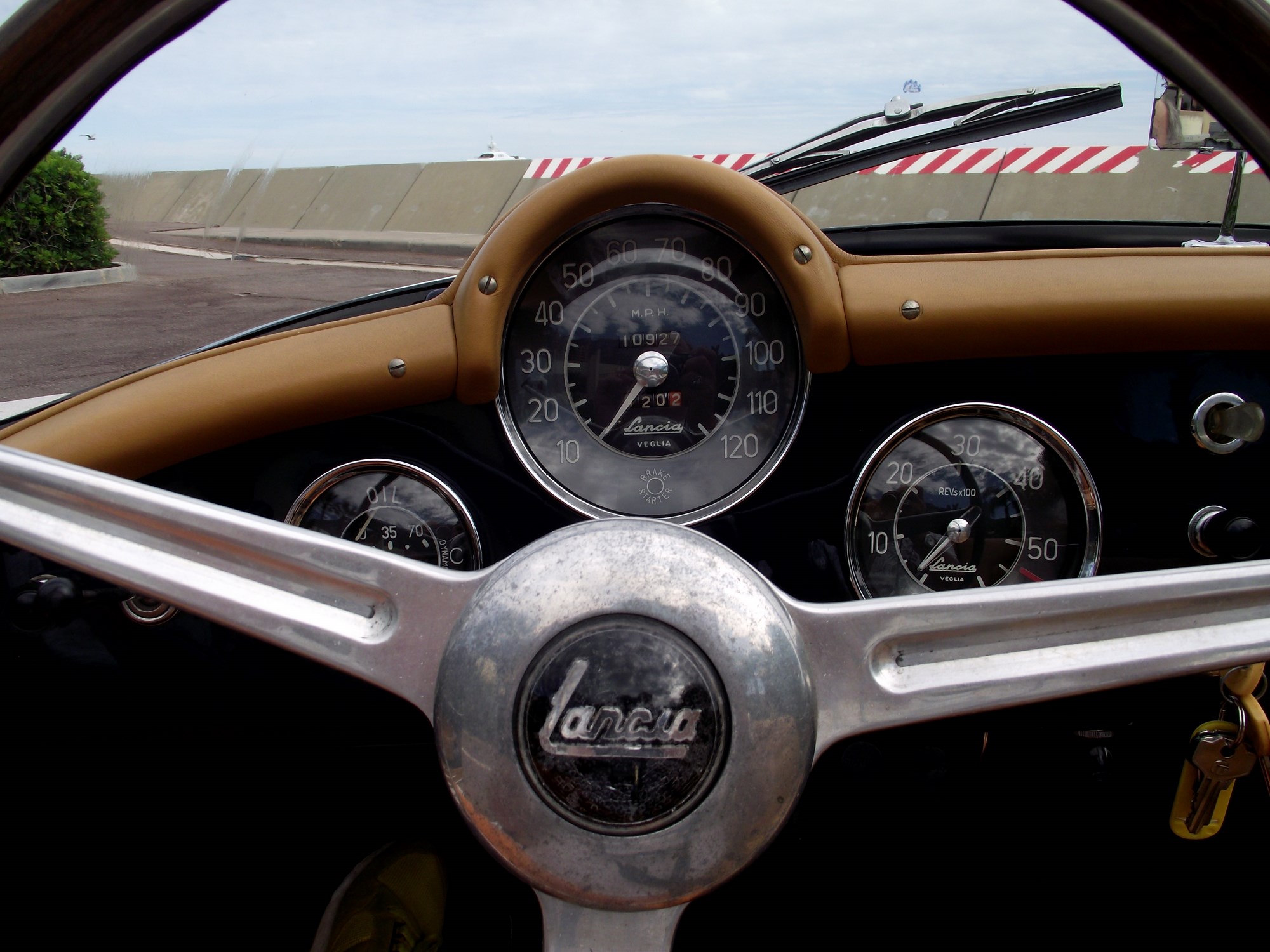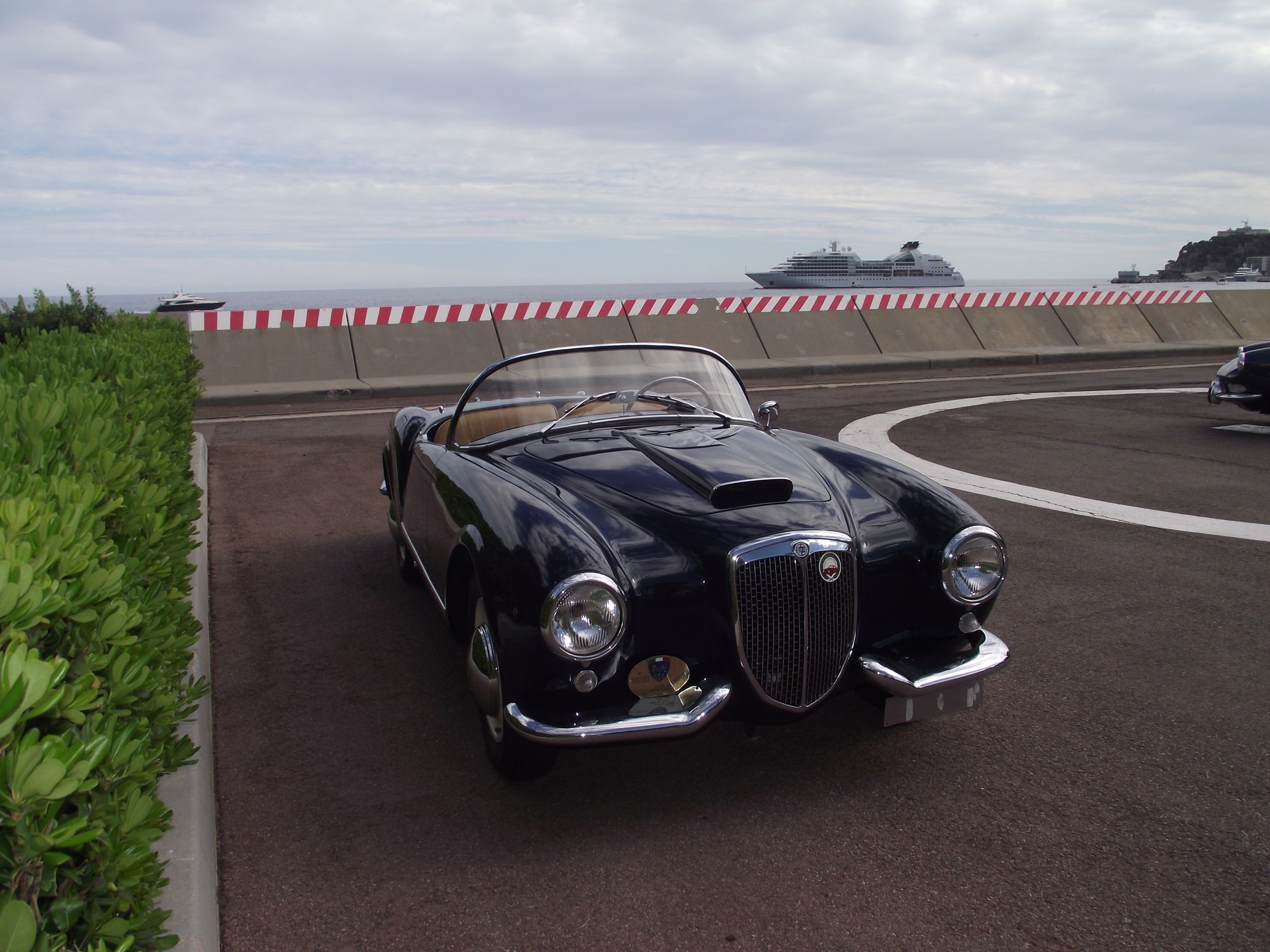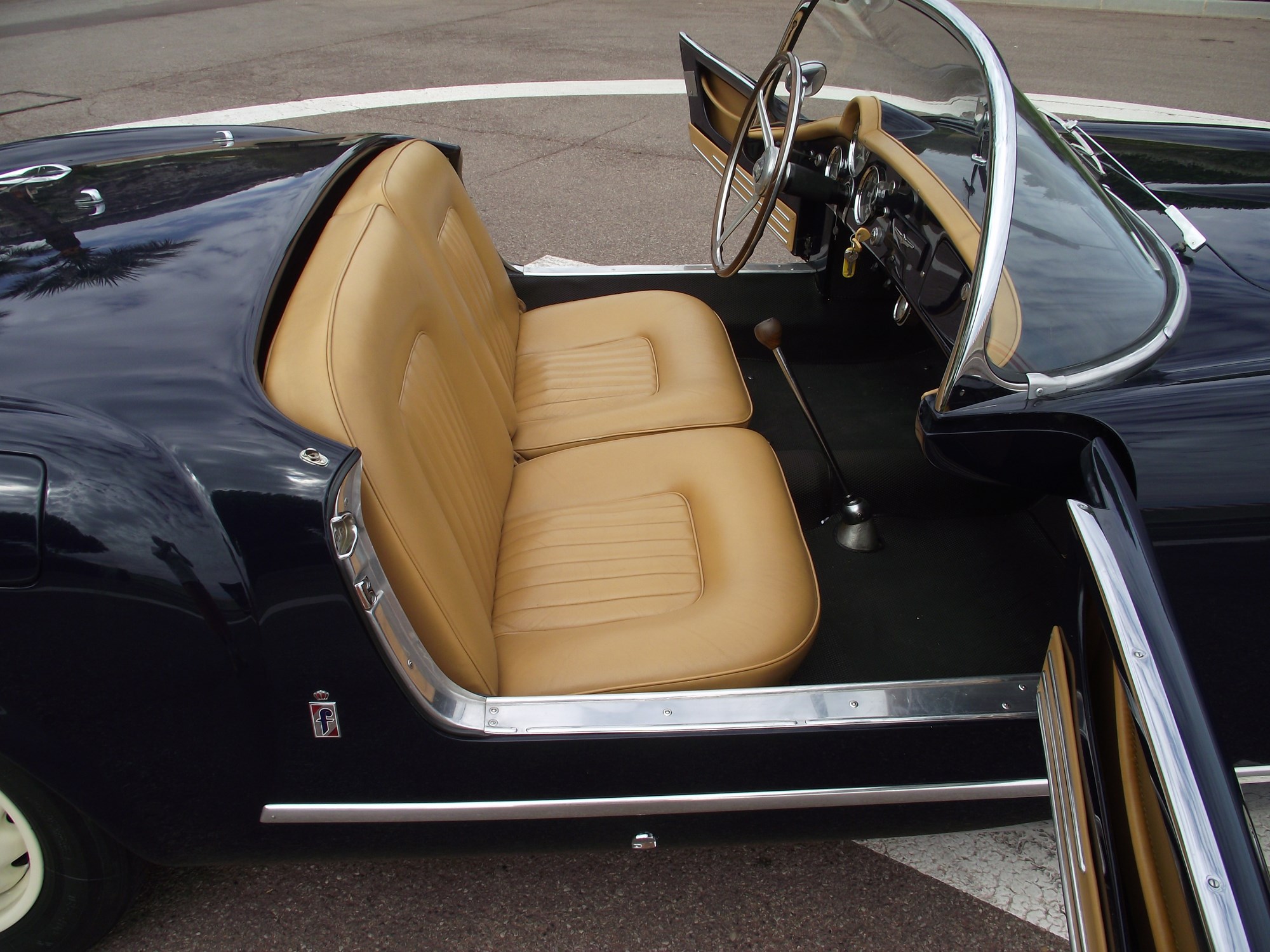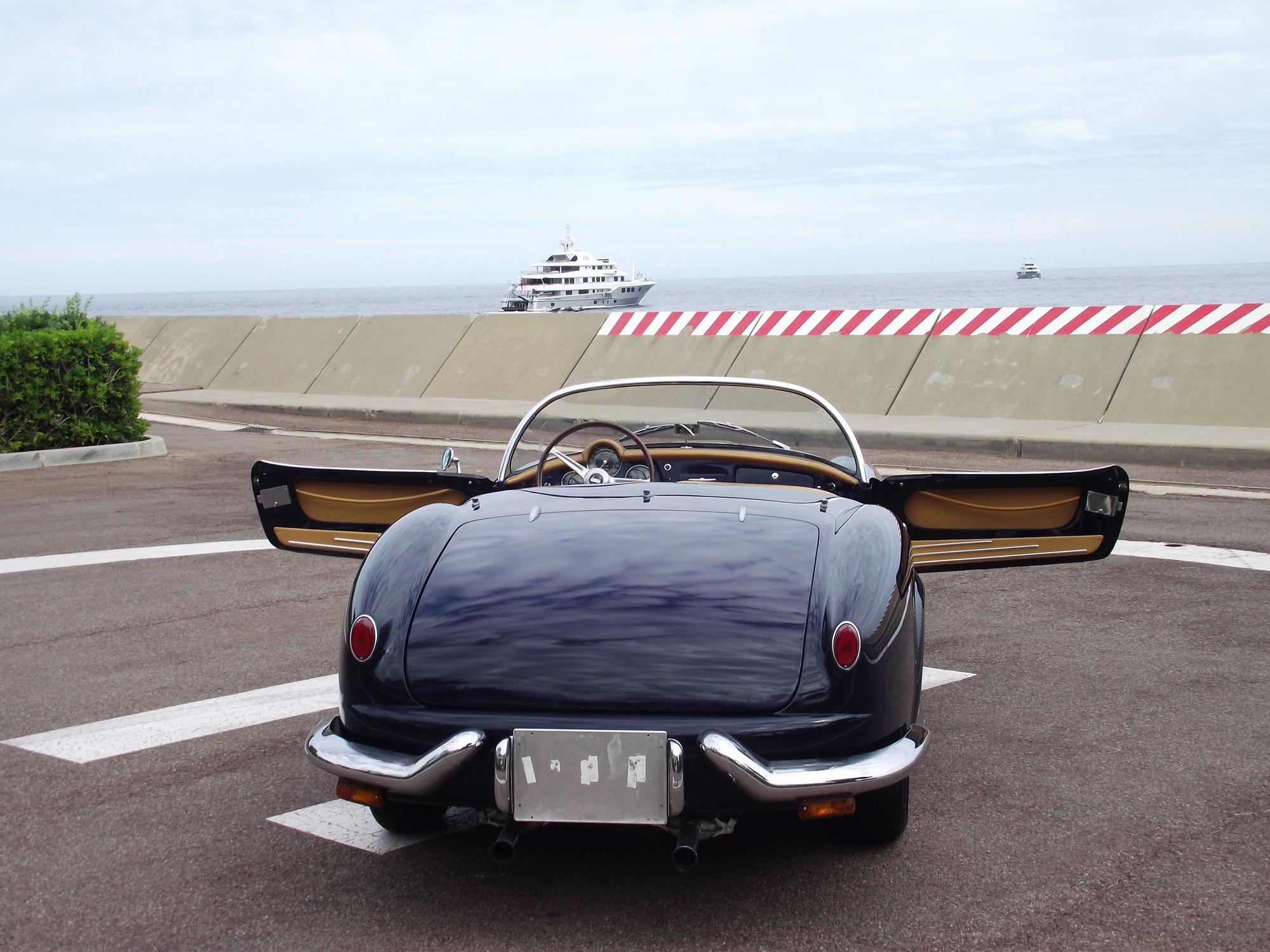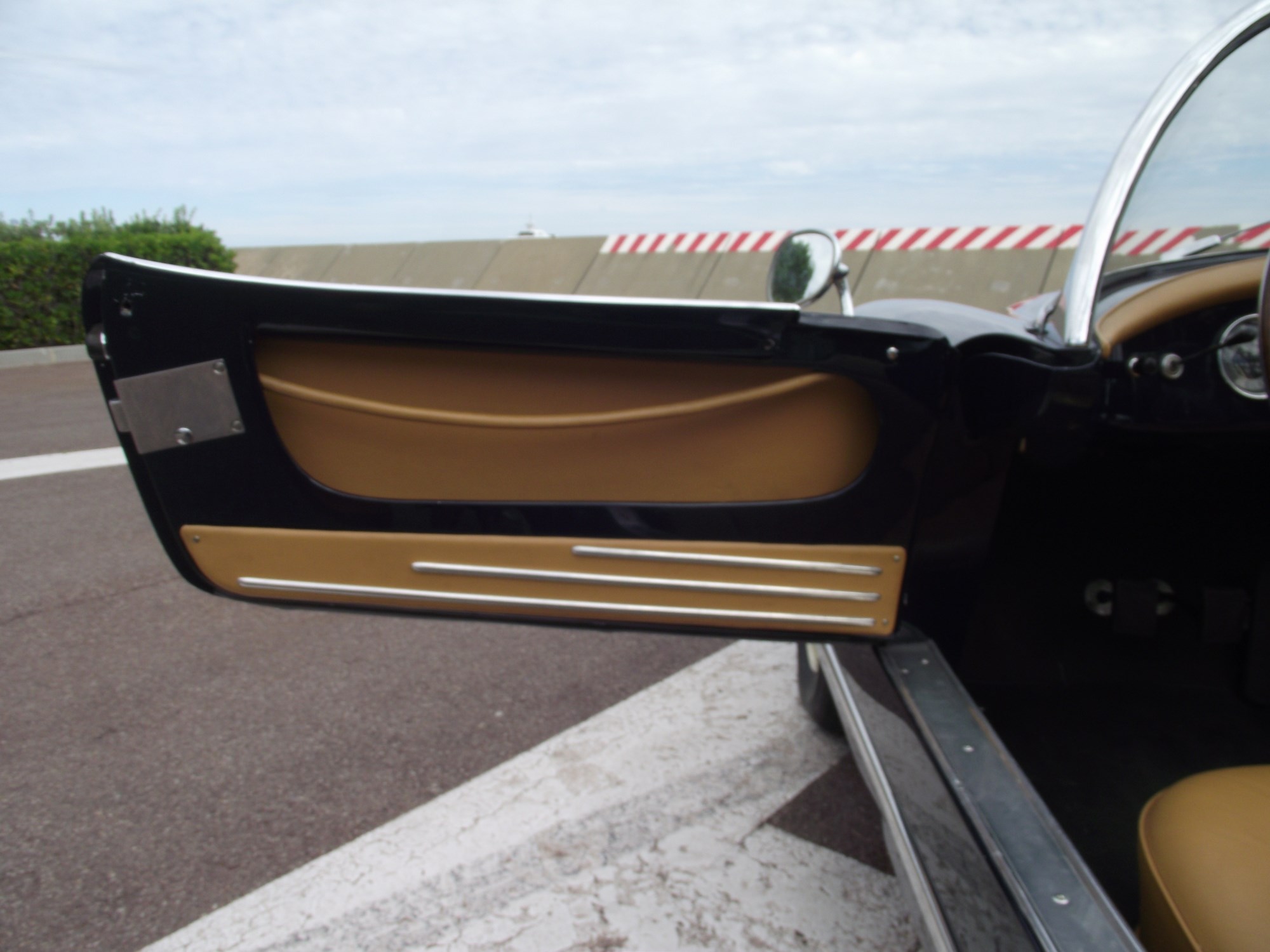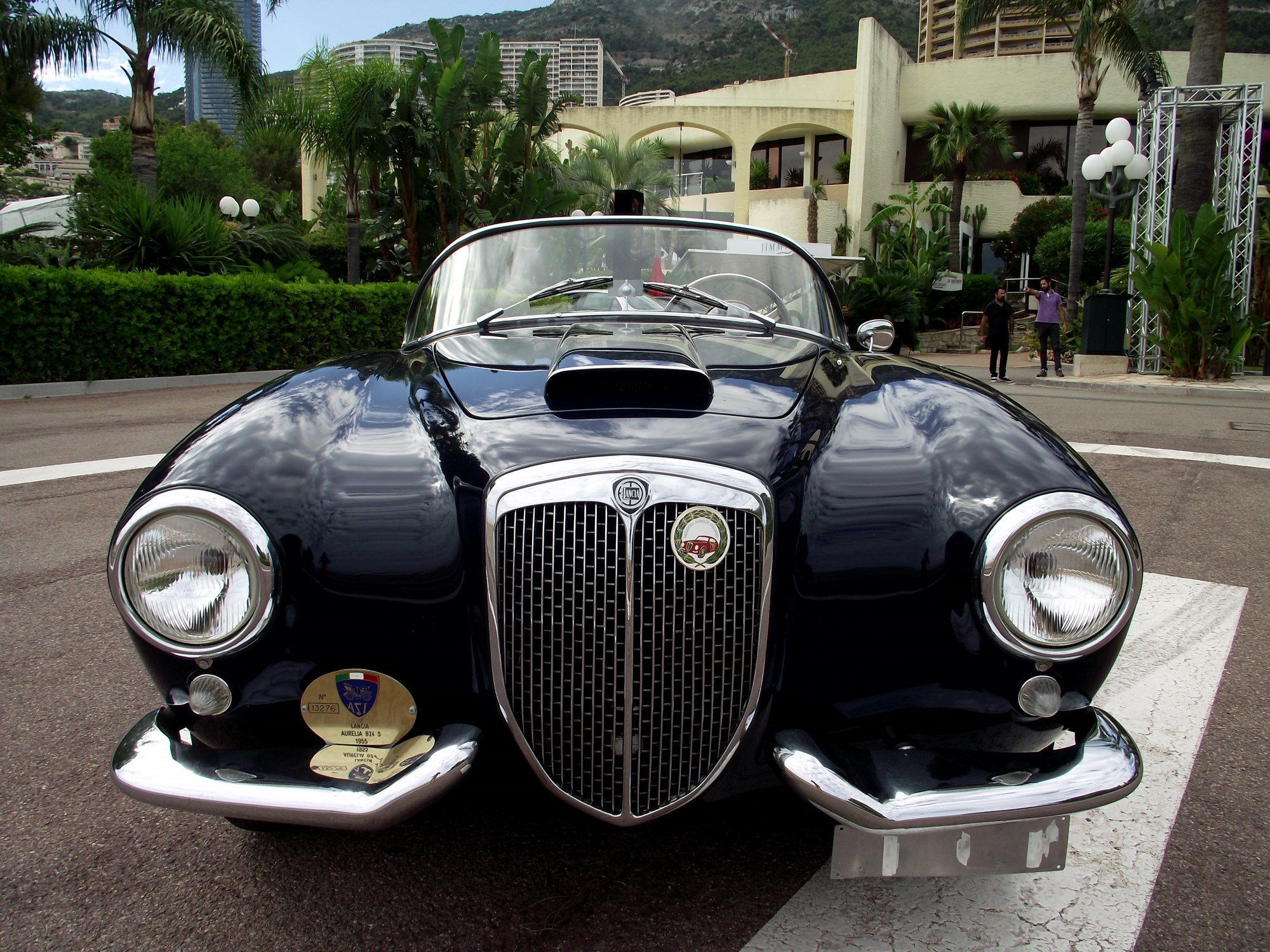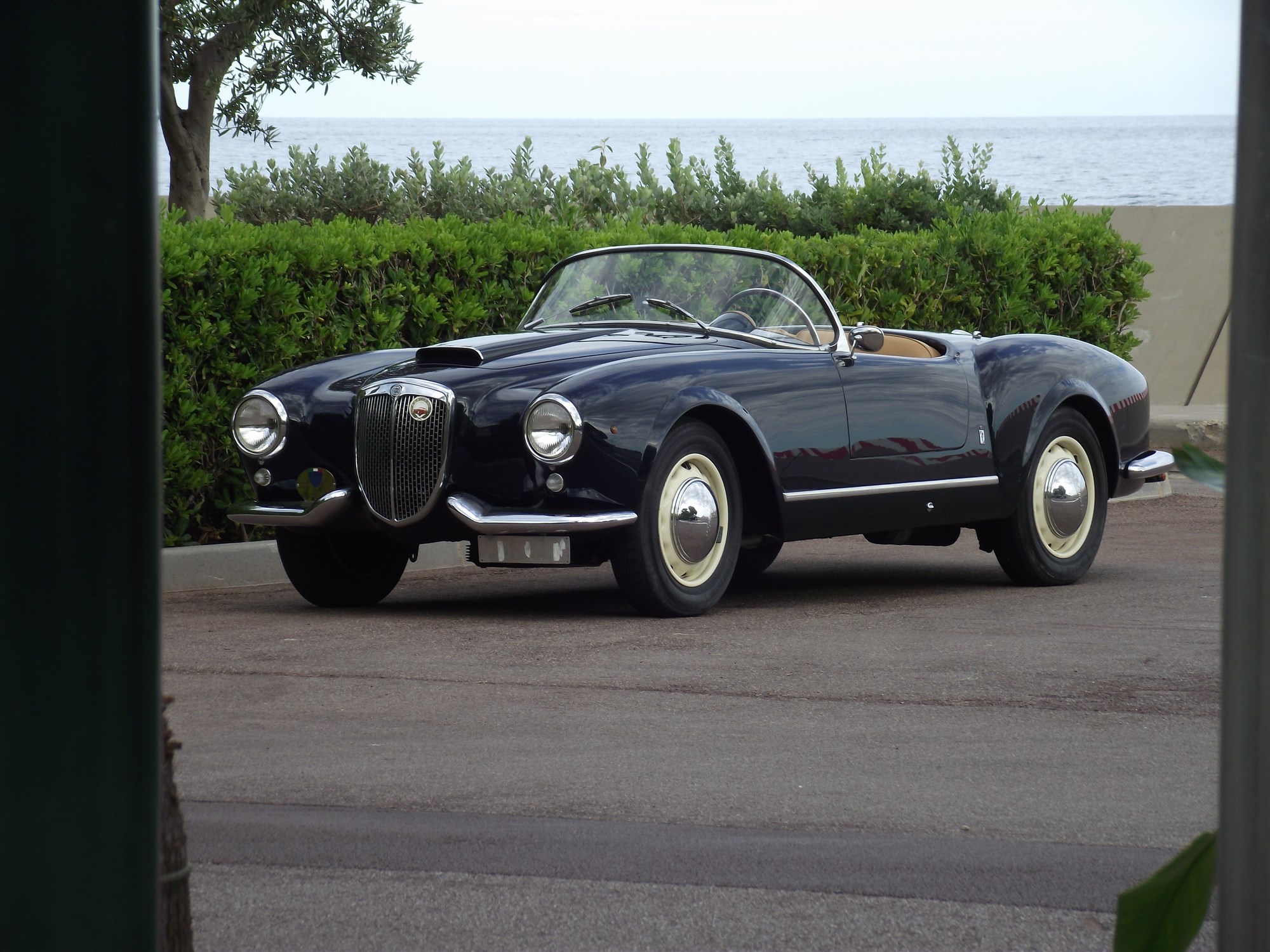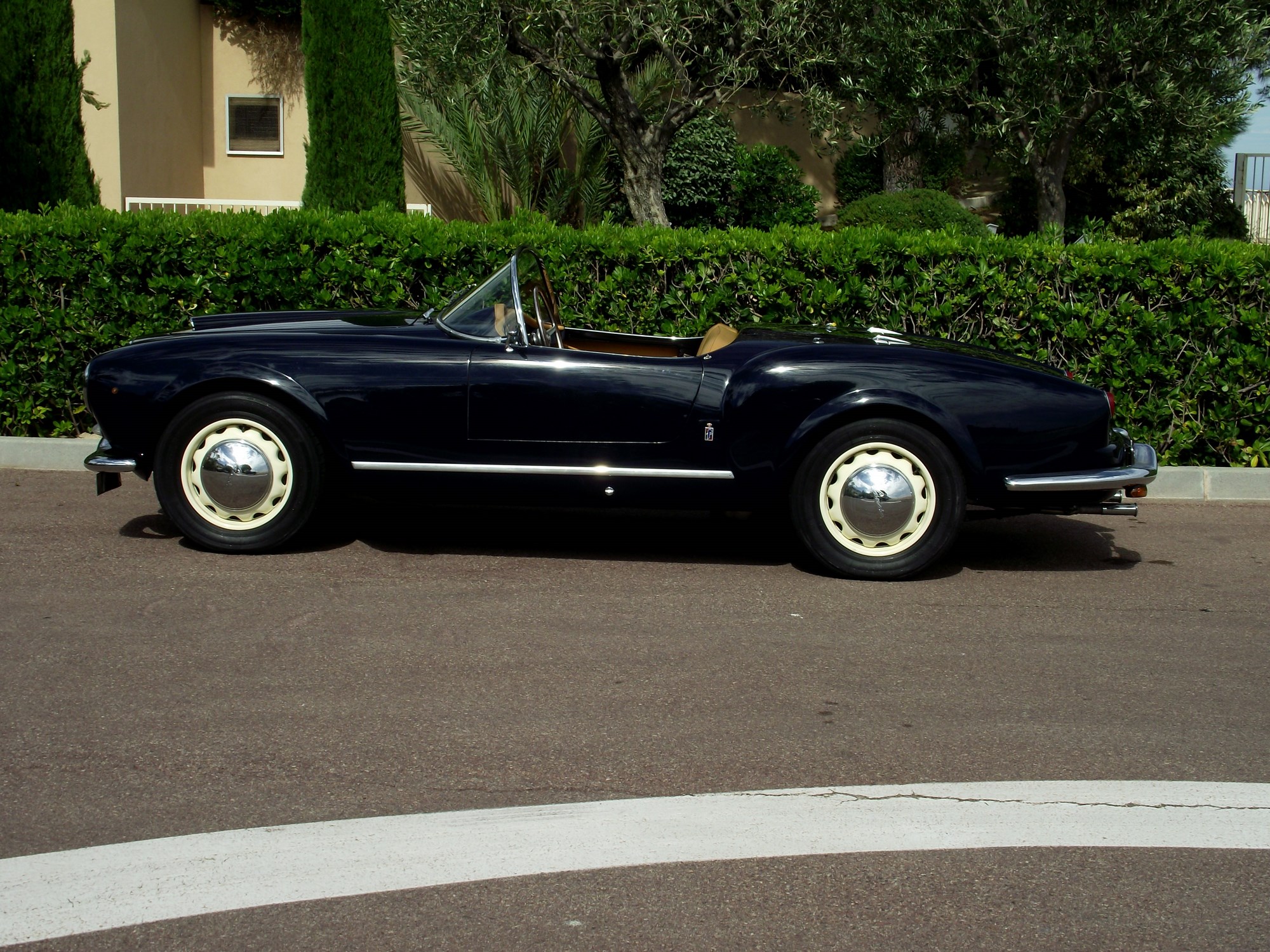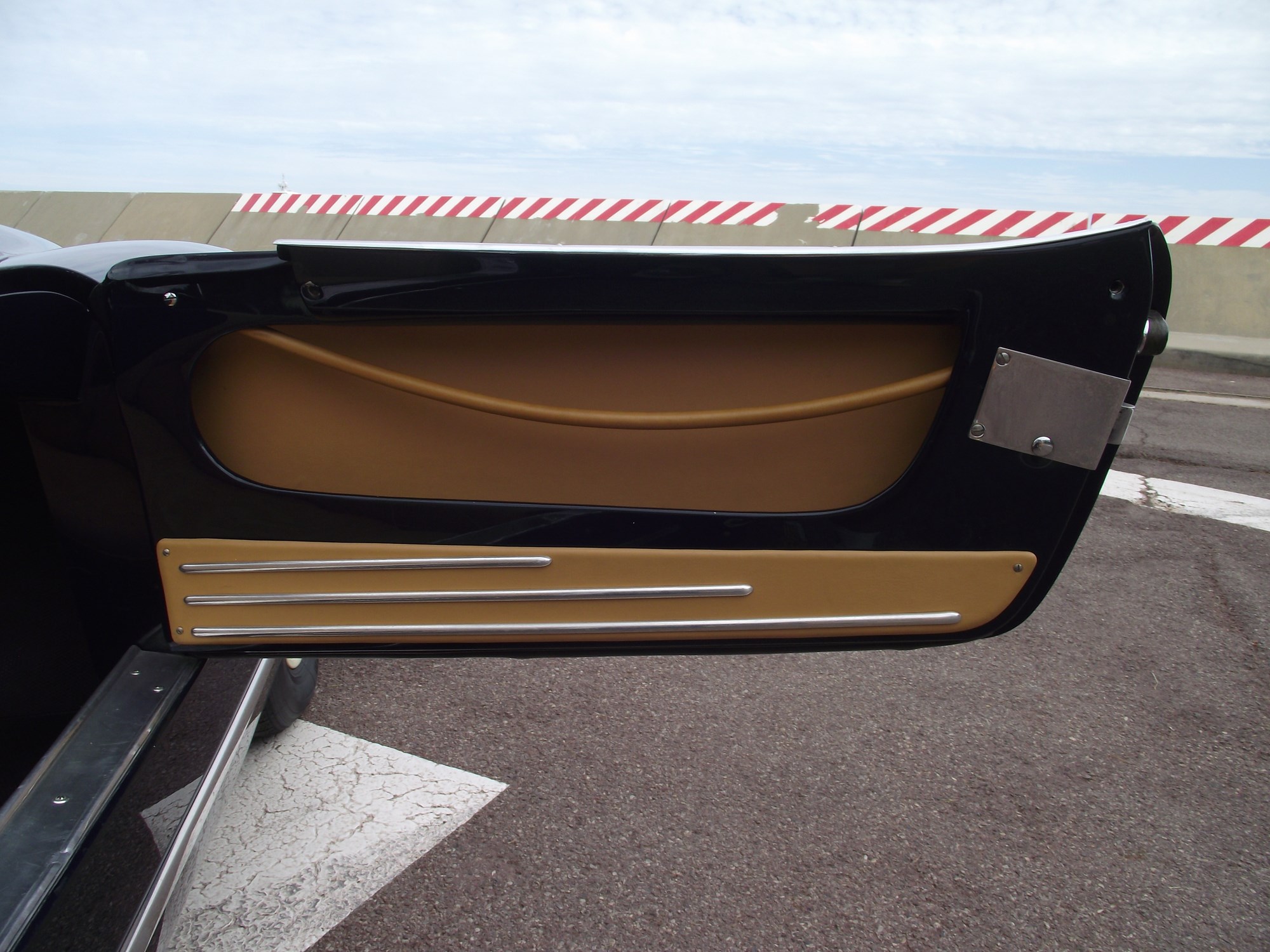1955 Lancia Aurelia B24S Spider America
Category
Located in the USA1955 Lancia Aurelia B24S Spider America
This Left hand drive Lancia Aurelia B24S Spider America is an exceptional example which has been restored by famed Lancia restorer KGC in Italy to the highest standards. Stunning color combination complementing the beautiful lines. It has been part of a prominent Italian collection for many years and is now available for sale. Located in Europe.
About the Spider America
(Courtesy of Zwischengas.com)
In 1950, Lancia presented the first post-war design, the Aurelia, and one that had it all. As engine the first V6 engine ever in series production served, one had arranged the transmission for the purpose of better weight distribution behind the differential, the body of the sedan was half-self-supporting.
As early as 1951, Pinin Farina presented a four-seater convertible on the chassis of the Aurelia, which, however, was more suited to comfort than to sporting requirements. For sporty customers, there was a coupé with a two-liter engine from 1951 and a faster version with a 2.5-liter engine from 1953.
An open Gran Turismo
Fans of open-top Gran Turismos had to wait until late 1954, however, for Pininfarina to present a two-seat open-top variant whose styling borrowed from the D24 and other Pininfarina creations of the time. On December 13, 1954, Automobil Revue announced the B24, which was called “Spider America.”
“For the coming American sports car shows, Lancia is bringing out a new version of the Aurelia Gran Turismo, namely an open two-seater whose self-supporting body is being manufactured by Pinin Farina. The car is not only intended for the USA, but will also be sold in Europe if there is sufficient interest.
The initial series of 200 and 300 cars will be delivered around April. As the picture of the prototype shows, the new Spyder is somewhat shorter than the previous coupe; the wheelbase has in fact been reduced from 265 to 245 cm. In order to maintain the necessary torsional rigidity, the car is stiffened by particularly high and reinforced longitudinal box sections.
While the engine for America is expected to be designed a bit more elastically to spare drivers in the U.S. from having to shift gears too often: the European version will get the normal 118-horsepower, 2451-cfm engine (78X85.5 mm, six-cylinder in V below 60 degrees). The four-speed gearbox, locked to the final drive, is shifted by a middle gearshift. The de-dion rear axle is retained unchanged.
The open two-seater is fitted with a panoramic windshield, standard equipment on 1955 models in the USA. The car has a retractable folding top, removable side windows with ventilation vanes and an adjustable steering column. The bench seat is split down the middle and can be adjusted individually, as can the backrest. Behind the seats there is a space for the soft top, immediately adjoining the fuel tank. The spare wheel is stored horizontally in the floor of the luggage compartment. At around one ton, the weight of this new touring sports car is around 100 kg less than that of the Gran Turismo coupe.”
The number 2
After the first prototype, the Pininfarina body builders produced a second car, which was prepared for the upcoming motor shows. Compared with the first prototype, the car for Brussels and Geneva differed in that the bumpers had been changed, as instead of the filigree horns there were now wider bumpers. The Pininfarina emblem on the flank moved from a position in front of the door to the rear between the door and the wheel cutout. The prototype had plain wheel covers and dark steel wheels. Differences could also be seen on the inside. The first right-hand drive prototype did not have an interior mirror and the radio cover was rounded instead of rectangular.
Public presentation in Brussels and Geneva
Car number 2 with left-hand drive stood in the middle of the Lancia stand at the Brussels Motor Show in January 1955, having previously served as a model for the factory photographs and the sales brochure. In March 1955 it made again its Aufwartung in Geneva and let its filigree wheel covers, which showed a spoke pattern and only on this car were installed, in the lamp light flash. Of course, the car was no longer a real surprise after its pre-presentation in December 1954, Automobil Revue wrote in its coverage of the Geneva Show:
“The Aurelia range includes the refined 2nd series sedan, the Gran Turismo coupe and the new Spyder. This open two-seater, coachbuilt by Pinin Farina, is one of the most beautiful and hamonically coachbuilt of the salon, and it proves once again that the American panoramic window suits an open car much better than a sedan.”
ADAC Motorwelt had already commented on the novelty on the occasion of the Brussels Motor Show:
“Lancia debuted the new Lancia Aurelia Gran Turismo Spider 2500 with panoramic windshield. The 2.5-liter six-cylinder produces 118 hp at 5000 rpm and gives the car a top speed of 185 mph.”
With the spelling one was not united at that time. While Lancia itself wrote in the brochure of “Spider”, which was also adopted by Seifert in the ADAC Motorwelt, the AR stubbornly chose the term “Spyder”.
Transition to series production
While the salon exhibition vehicle (chassis B24S1002) was already quite close to series production, some differences became apparent in the cars thereafter. For example, it was about five centimeters shorter, which is visible in the smaller distance between the windshield frame and the hood. The windshield frame consisted of four parts, and the windshield wipers ran parallel across the windshield rather than against each other. The interior also had differences to the production cars and the Pininfarina logo was supplemented by a complete lettering.
Modular technology
The technology of the B24 Spider (the “S” in the designation B24S stands for sinistra, i.e. left-hand drive) could be taken over virtually unchanged from the GT coupe, except that the wheelbase was shortened and the floor platform reinforced.
The engine was thus the familiar V6 engine with a displacement of 2.5 liters and 118 hp at 5000 rpm. This had few problems with the car, which weighed only 1060 kg, and the top speed of 185 km/h at any rate was likely to have provided for many regulars’ table discussions.
Rarity
The America Spider cost around 30,000 francs in 1955, the equivalent of about six VW Beetles. Only a few had such a large budget and, as expected, many of them lived in the USA. Not all the cars built reached the sellers, however, because in 1956 the ship Andrea Doria collided in the fog with another passenger ship and sank not only the prototype Chrysler Norseman but also 50 Lancia B24 Spiders to the bottom of the sea.
Pininfarina produced a total of 240 Spiders with panoramic windshields, then a version called Cabriolet or Convertible with a less curved windshield and retractable side windows replaced the America Spider. The Convertible was built over 500 times until its end also came in 1958.
Precious
The few surviving America Spiders are not only regulars at concours events, they also achieve high prices at auction, even if they are only restoration items.
Bonhams expects the second B24S Spider ever built – the original prototype is said to no longer exist – from 1955 to fetch between EUR 900,000 and 1,300,000 in Paris at the 2016 Grand Palais auction, and this is certainly not an unrealistic price when one knows that the car is practically a one-off, has been completely restored without regard to cost, and today stands as it did when it made its appearance at the Brussels and Geneva salons in 1955.


